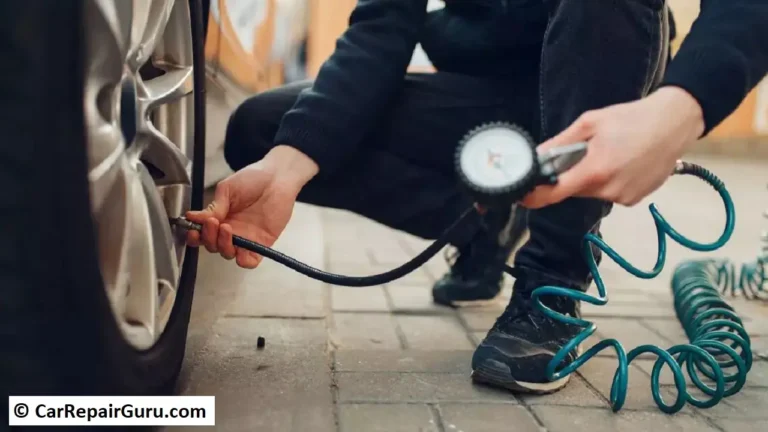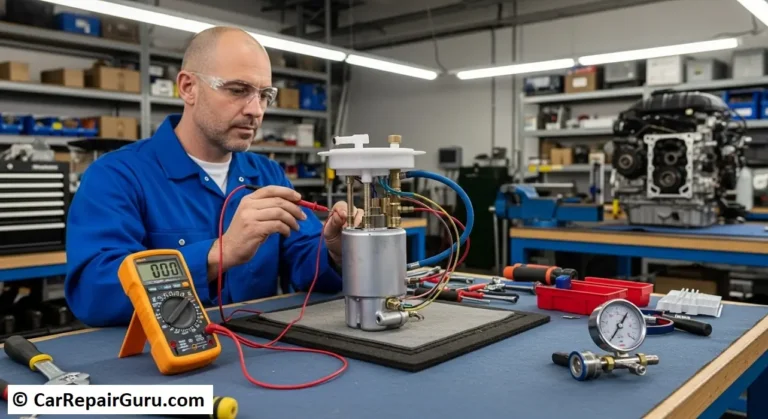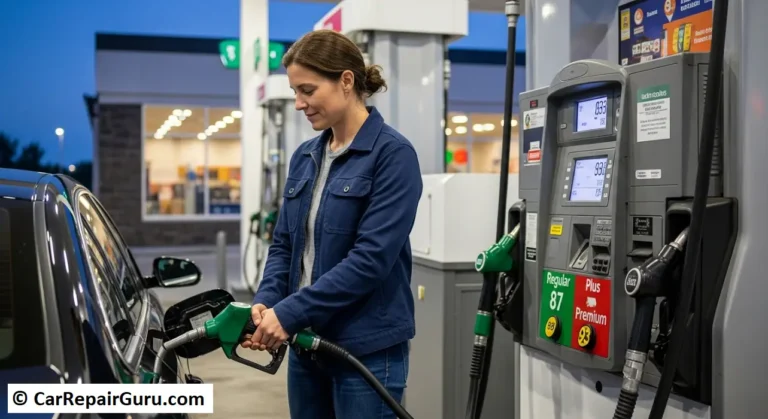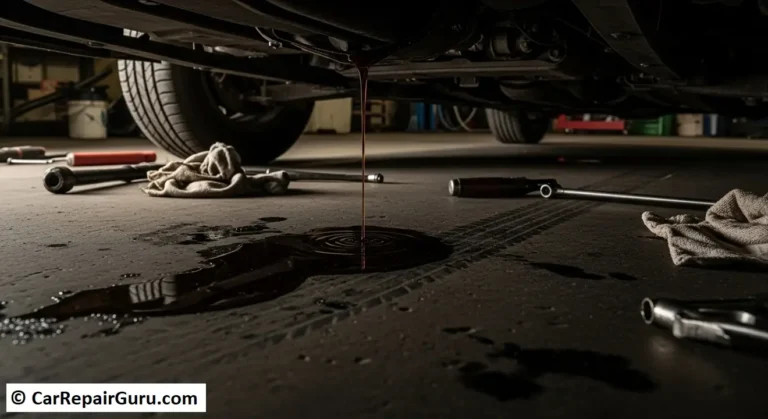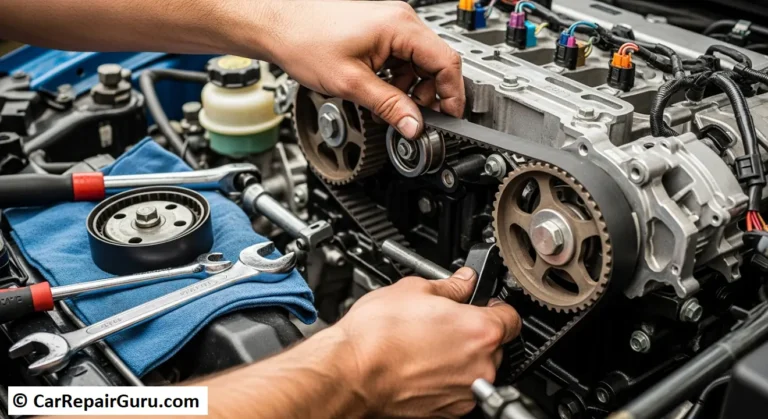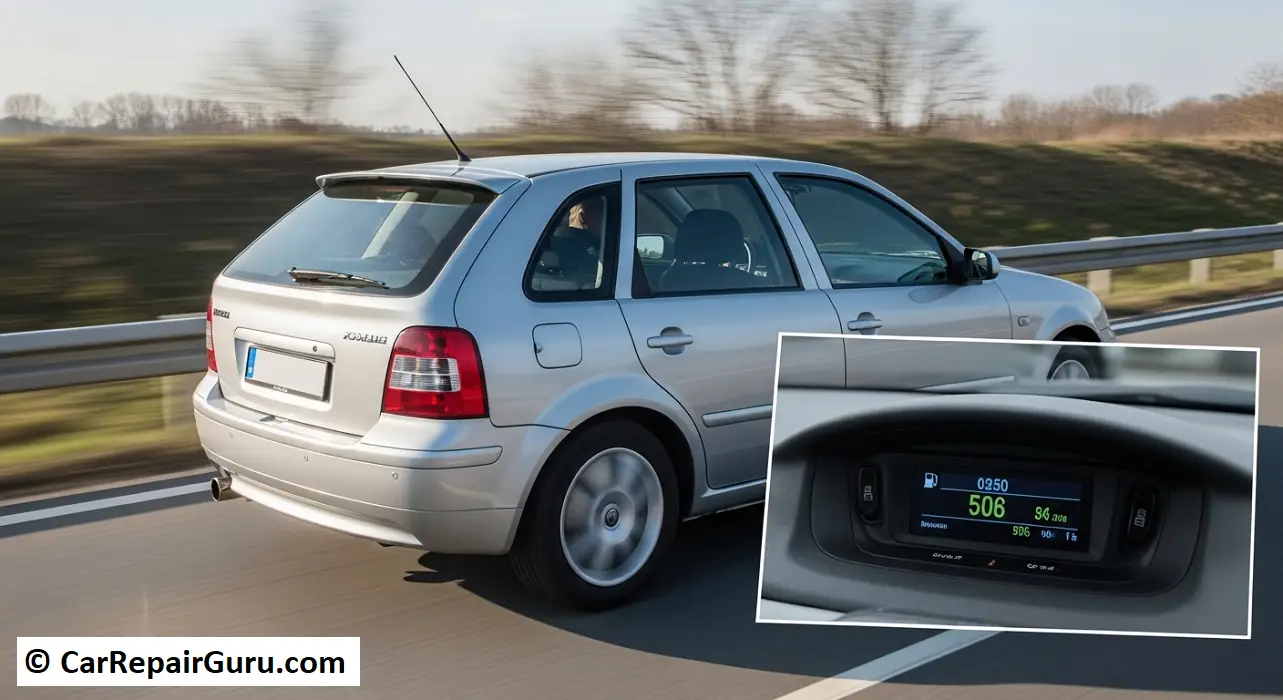
Watching the numbers climb at the gas pump can be a frustrating experience. It often feels like a part of your budget that’s completely out of your control. But what if you could take back some of that control? The truth is, you can. Improving your car’s fuel efficiency is one of the most effective ways to save money on gas, reduce your environmental impact, and even extend the life of your vehicle.
The best part? You don’t need to be a mechanic or buy a new hybrid to see a real difference. This guide is packed with simple, actionable steps that anyone can take to achieve better fuel economy. We’ve broken them down into three key areas: your driving habits, your car’s maintenance, and a little smart planning.
Ready to turn your car into a fuel-sipping machine and keep more money in your wallet? Let’s dive in.
Top 5 Quick Wins for Better Gas Mileage
If you only do five things to boost your MPG, make them these. These quick wins offer the biggest bang for your buck and are incredibly easy to implement today.
- Maintain Proper Tire Pressure: Under-inflated tires create more friction (rolling resistance), forcing your engine to work harder. Keeping them properly inflated is one of the easiest ways to increase gas mileage.
- Drive Smoothly: Aggressive acceleration and hard braking are fuel-guzzlers. Be gentle on the pedals and think of your momentum as a precious resource.
- Reduce Your Highway Speed: Driving at 65 mph instead of 75 mph can improve your fuel efficiency by up to 15%. Aerodynamic drag is a major force, and speed is its best friend.
- Remove Unnecessary Weight: Your engine burns more fuel to move more weight. Take that heavy stuff out of your trunk that you’re just hauling around for no reason.
- Avoid Excessive Idling: If you’re going to be stopped for more than a minute, turn the engine off. An idling car gets 0 miles per gallon.
Fuel-Efficient Driving Habits (The Biggest Impact)
The single biggest factor in your car’s fuel consumption isn’t the engine or the brand—it’s the person behind the wheel. Mastering these fuel-efficient driving techniques, often called “eco-driving,” can improve your mileage by as much as 30%.
1. Drive Smoothly – The Accelerator is Not an On/Off Switch
Imagine an egg under your gas pedal. Your goal is not to crack it. Rapid starts and sudden stops are the enemies of fuel efficiency. Every time you slam on the brakes, you waste the forward momentum your engine just burned fuel to create.
How to do it: Accelerate gradually from a stop. When you see a red light or stop sign ahead, take your foot off the gas and coast, letting the car slow down naturally before applying the brakes gently.
2. Obey the Speed Limit (and Slow Down)
While every car has a slightly different “sweet spot,” fuel economy generally peaks around 50 mph (80 km/h). After that, efficiency drops off sharply. The reason is aerodynamic drag, which increases exponentially with speed. Your engine has to fight much harder to push through the air at 75 mph than it does at 60 mph.
The Payoff: According to the U.S. Department of Energy, every 5 mph you drive over 50 mph is like paying an extra $0.20-$0.40 per gallon for gas.
3. Use Cruise Control on the Highway
Your foot is great at a lot of things, but maintaining a perfectly constant speed isn’t one of them. On long, flat stretches of highway, cruise control is your best friend. It eliminates the tiny, unconscious accelerations and decelerations that waste fuel over time.
When to avoid it: Don’t use cruise control in hilly terrain. It will often aggressively accelerate to maintain speed up a hill, which is less efficient than allowing your speed to drop slightly.
4. Avoid Excessive Idling
This is a simple one: an idling car is getting zero miles per gallon. Modern fuel-injected engines are incredibly efficient and don’t need to be “warmed up” for minutes on end.
The 60-Second Rule: If you anticipate being stopped for more than 60 seconds—at a train crossing, in a long pickup line, or waiting for someone—it’s more fuel-efficient to turn off the engine and restart it when you’re ready to go.
5. Anticipate Traffic Flow
Look well beyond the car in front of you. By anticipating the flow of traffic, you can avoid unnecessary braking and acceleration. See a traffic jam or a stale green light up ahead? Start coasting early. See a line of cars taking off from a light? Begin a slow, rolling start so you don’t have to stop completely. This keeps your momentum up and is a key fuel saving tip.
6. Manage Your A/C and Windows
This is the classic debate: what’s more efficient? Here’s the breakdown:
- At Low Speeds (under 45 mph): Using the A/C puts a direct load on the engine, burning more fuel. Here, it’s more efficient to roll down your windows.
- At Highway Speeds (over 50 mph): Open windows create significant aerodynamic drag, making your engine work harder to overcome wind resistance. In this scenario, it’s actually more fuel-efficient to roll up the windows and use the A/C.
Essential Car Maintenance for Peak Efficiency
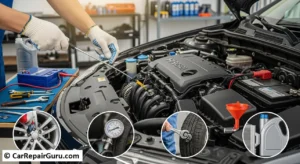
A well-maintained car is an efficient car. Neglecting basic upkeep forces your vehicle’s components to work harder, and that means burning more fuel. Think of this as the foundation of better fuel economy.
7. Maintain Proper Tire Pressure
This is arguably the most important maintenance check you can perform. Under-inflated tires sag and create a larger contact patch with the road, increasing “rolling resistance.” It’s like trying to ride a bicycle with flat tires—it takes a lot more energy.
- How to do it: Check your tire pressure at least once a month when the tires are cold. The correct pressure is listed on a sticker on the driver’s side doorjamb—not on the tire sidewall.
- The Impact: You can improve your car fuel efficiency by around 0.6% on average—up to 3% in some cases—just by keeping your tires properly inflated.
8. Use the Recommended Grade of Motor Oil
Oil lubricates your engine’s moving parts, reducing friction. Using the manufacturer’s recommended viscosity (e.g., 5W-20 or 0W-20) ensures the oil is thin enough to do its job without creating unnecessary drag. Using a thicker oil than recommended is like making your engine swim through honey.
9. Keep Your Engine Tuned – Air Filters & Spark Plugs
A modern tune-up involves a few key components critical for fuel efficiency.
- Air Filter: A clogged air filter restricts airflow, essentially “choking” your engine and forcing it to use more fuel to get the air it needs. Replacing it is a cheap and easy fix.
- Spark Plugs: Worn-out spark plugs can cause misfires, meaning fuel is sent into the cylinder but isn’t burned completely. This is a direct waste of gasoline.
10. Check Your Wheel Alignment
If your wheels are misaligned, they are essentially fighting each other, dragging and scrubbing along the road instead of rolling freely. A proper alignment ensures all four wheels are pointed in the exact same direction, reducing resistance and improving your MPG.
11. Get Regular Emissions System Checks (Oxygen Sensor)
A critical but often overlooked component is the oxygen sensor. It measures the amount of unburned oxygen in your exhaust and tells the car’s computer how to adjust the air-fuel mixture. A failing sensor can feed the computer bad information, leading to a rich mixture that wastes fuel and can damage your catalytic converter. If your “Check Engine” light is on, get it checked immediately.
Smart Planning & Preparation (Before You Drive)
Some of the best fuel saving tips happen before you even turn the key. A few minutes of planning can save you significant fuel over the course of a week.
12. Lighten Your Load
It’s simple physics: the heavier the object, the more energy it takes to move it. Those golf clubs, old textbooks, or heavy toolboxes you keep in your trunk are costing you money on every trip.
The Rule of Thumb: For every extra 100 pounds in your vehicle, your fuel economy can drop by about 1-2%.
13. Improve Aerodynamics
Remember that talk about drag? Anything that disrupts the smooth flow of air over your car will decrease its efficiency at speed. The biggest culprit is a roof rack or cargo box. If you aren’t using it, take it off.
14. Combine Your Errands into a Single Trip
An engine is least efficient when it’s cold. Several short trips, with the engine cooling down in between each one, will use significantly more fuel than one longer, multi-stop trip. Plan your route to get everything done in one go while the engine is warm and operating at peak efficiency.
15. Check Your Route for Traffic
The shortest route is not always the most fuel-efficient route. Stop-and-go traffic is an efficiency killer. Use a GPS app like Google Maps or Waze to check for traffic jams, construction, and road closures before you leave. A slightly longer but free-flowing route will almost always use less gas.
16. Choose the Right Fuel (But Don’t Overspend)
Check your owner’s manual. If your car is designed to run on “Regular 87 Octane,” filling it with “Premium 91” provides absolutely no benefit. It doesn’t improve performance or fuel economy. You are simply spending more money for no reason. Stick to the grade your manufacturer recommends.
Common Fuel Efficiency Myths, Busted!
There’s a lot of misinformation out there. Let’s separate fact from fiction.
Myth 1: You need to warm up your car for several minutes before driving.
Fact: Modern fuel-injected engines don’t need this. In fact, they warm up much faster and more efficiently by being driven gently for the first few minutes. Idling in the driveway just wastes fuel.
Myth 2: Fuel additives and “miracle” gadgets will double your MPG.
Fact: Be skeptical. While some fuel system cleaners can help a poorly maintained engine, the vast majority of over-the-counter additives and aftermarket devices provide little to no benefit, according to extensive testing by the EPA.
Myth 3: Filling up your tank in the morning when it’s cool gets you more gas.
Fact: The science here is that gasoline is denser when cold. However, gas stations store their fuel in large, insulated underground tanks where the temperature is very stable. The difference is so minuscule you would never notice it.
For the “Hypermiling” Enthusiast
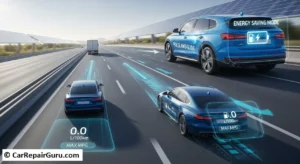
Disclaimer: These techniques are for advanced users and should only be attempted when safe to do so. Safety should always be your top priority.
“Hypermiling” is the practice of using advanced techniques to maximize fuel efficiency.
17. Coasting in Neutral: Shifting to neutral on a long downhill can save fuel, but it reduces your control over the vehicle. Many modern cars also do this automatically by cutting fuel to the injectors during deceleration.
18. “Pulse and Glide” Technique: This involves accelerating to a certain speed (the pulse) and then coasting in neutral until your speed drops to a lower threshold (the glide), then repeating.
19. Drafting: Driving closely behind a large truck to reduce wind resistance. This is extremely dangerous and not recommended.
Start Saving Today – Your Fuel Efficiency Action Plan
You now have a complete toolkit of 21 ways to improve car fuel efficiency. You don’t have to do everything at once. The key is to start building better habits.
- Focus on Driving: The way you drive has the biggest and most immediate impact. Start by being a smoother, smarter driver.
- Schedule Maintenance: Check your tire pressure this weekend. On your next oil change, ask for the recommended oil and a new air filter.
- Plan Ahead: Before your next trip for errands, think about combining stops and cleaning out your trunk.
By consistently applying even a few of these fuel saving tips, you can make a real dent in your monthly gas bill. Those small changes add up to big savings over the course of a year.
What’s the first tip you’re going to try? Share your favorite fuel-saving trick in the comments below!
Frequently Asked Questions
What is the most fuel-efficient speed to drive?
Generally, it’s between 45 and 55 mph. However, this varies by vehicle. The key is that efficiency drops off significantly at speeds above 60 mph due to wind resistance.
Does air conditioning use more gas than having the windows down?
It depends on your speed. At low, city speeds (under 45 mph), open windows are more efficient. At highway speeds, the aerodynamic drag from open windows is worse than the engine load from the A/C, so using the A/C is better.
What are the main causes of a sudden drop in fuel efficiency?
The most common culprits are under-inflated tires, a clogged engine air filter, a faulty oxygen sensor (often indicated by a “Check Engine” light), or misaligned wheels.
Do fuel injector cleaners actually improve gas mileage?
If your fuel injectors are genuinely dirty or clogged, a high-quality cleaner can help restore lost performance and efficiency. However, if your system is already clean, it won’t provide any additional benefit.
Is it better to have a full tank of gas or a half tank?
Theoretically, a half tank is better because it weighs less, and less weight means slightly better fuel economy. However, the difference is very small for most drivers. It’s more important to avoid running your tank nearly empty, as this can be hard on the fuel pump.
